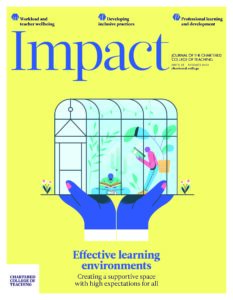Do as I do: Modelling self-regulation to promote learning
Written by: Michael Jerstice

5 min read
Mike Jerstice, Reading Blue Coat School, UK
Background
When you sort the Teaching and Learning Toolkit from the Education Endowment Foundation (2014) by ‘impact’, self-regulatory and metacognitive strategies are at the top. Self-regulation is one of the best ways in which to improve attainment and engagement in any student body, but just defining it is difficult. As we are combining several strands of related research into thinking about learning, allocation of resources and motivation into one area, under one umbrella term, I defer to the experts of the EEF for a definition:
Metacognition and self-regulation approaches to teaching support pupils to think about their own learning more explicitly, often by teaching them specific strategies for planning, monitoring, and evaluating their learning.
Instilling self-regulation is not a new pursuit for me; since first digging deeper into the plethora of articles and inset experiences spawned from Blackwell et al.’s mindset research
Join us or sign in now to view the rest of this page
You're viewing this site as a guest, which only allows you to view a limited amount of content.
To view this page and get access to all our resources, join the Chartered College of Teaching (it's free for trainee teachers and half price for NQTs) or log in if you're already a member.
- Blackwell LS, Trzesniewski KH and Dweck CS (2007) Implicit theories of intelligence predict achievement across an adolescent transition: A longitudinal study and an intervention. Child Development, 78(1): 2 46–263.
- Education Endowment Foundation (EEF) (2014) Teaching and Learning Toolkit. Available at: https://educationendowmentfoundation.org.uk/education-evidence/teaching-learning-toolkit 21st_November_2014.pdf (accessed 22 March 2022).
- Rosenshine B (2012) Principles of instruction: Research-based strategies that all teachers should know. American Educator 36(1): 12–19, 39.
- Yeager DS and Walton GM (2011) Social-psychological interventions in education: They’re not magic. Review of Educational Research 81(2): 267–301.
- Zimmerman BJ and Schunk DH (eds) (2011) Handbook of Self-Regulation of Learning and Performance. New York: Routledge/Taylor & Francis Group.
0
0
votes
Please Rate this content
Subscribe
Please login to comment
0 Comments
Oldest
Newest
Most Voted
Inline Feedbacks
View all comments










